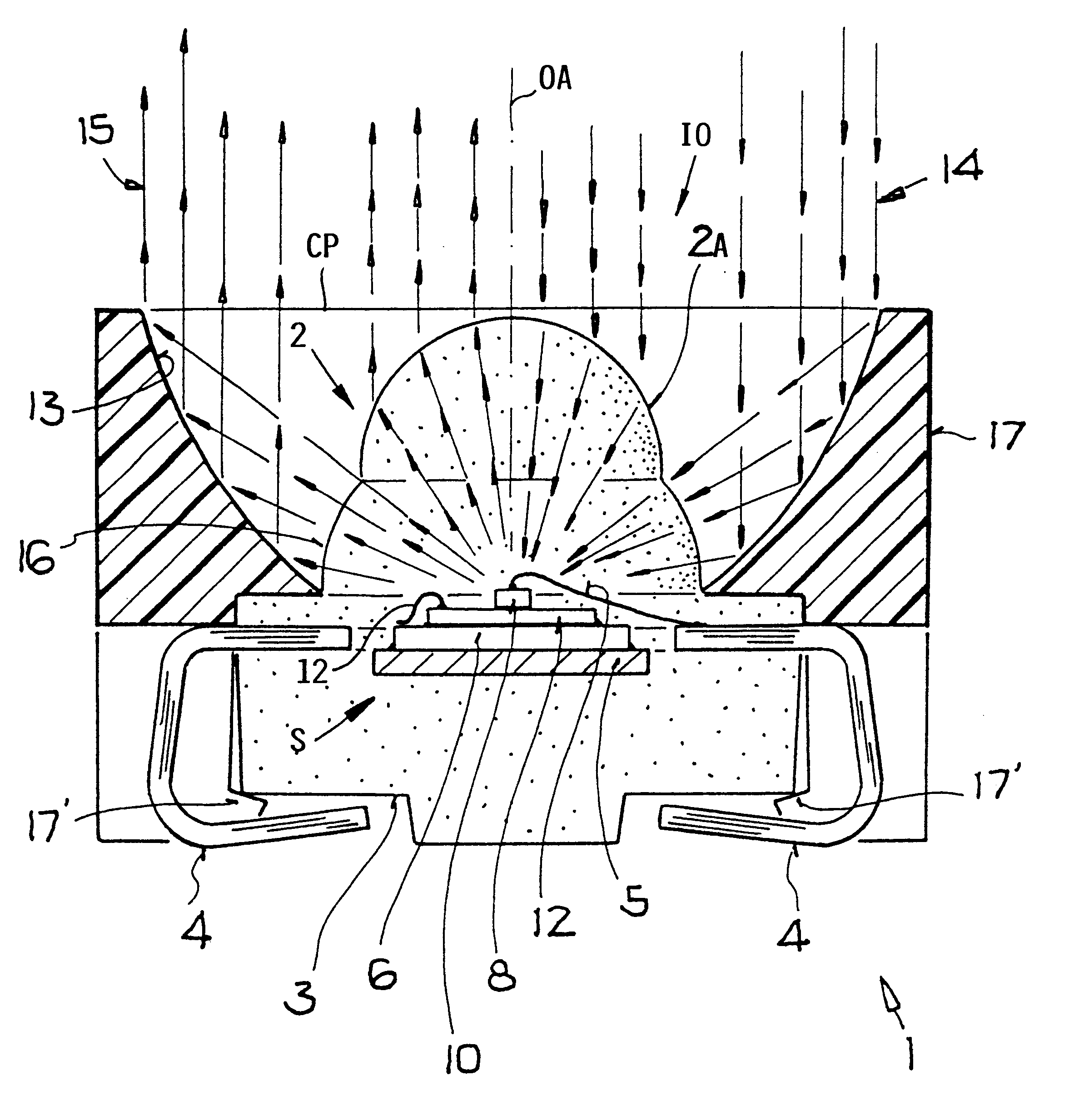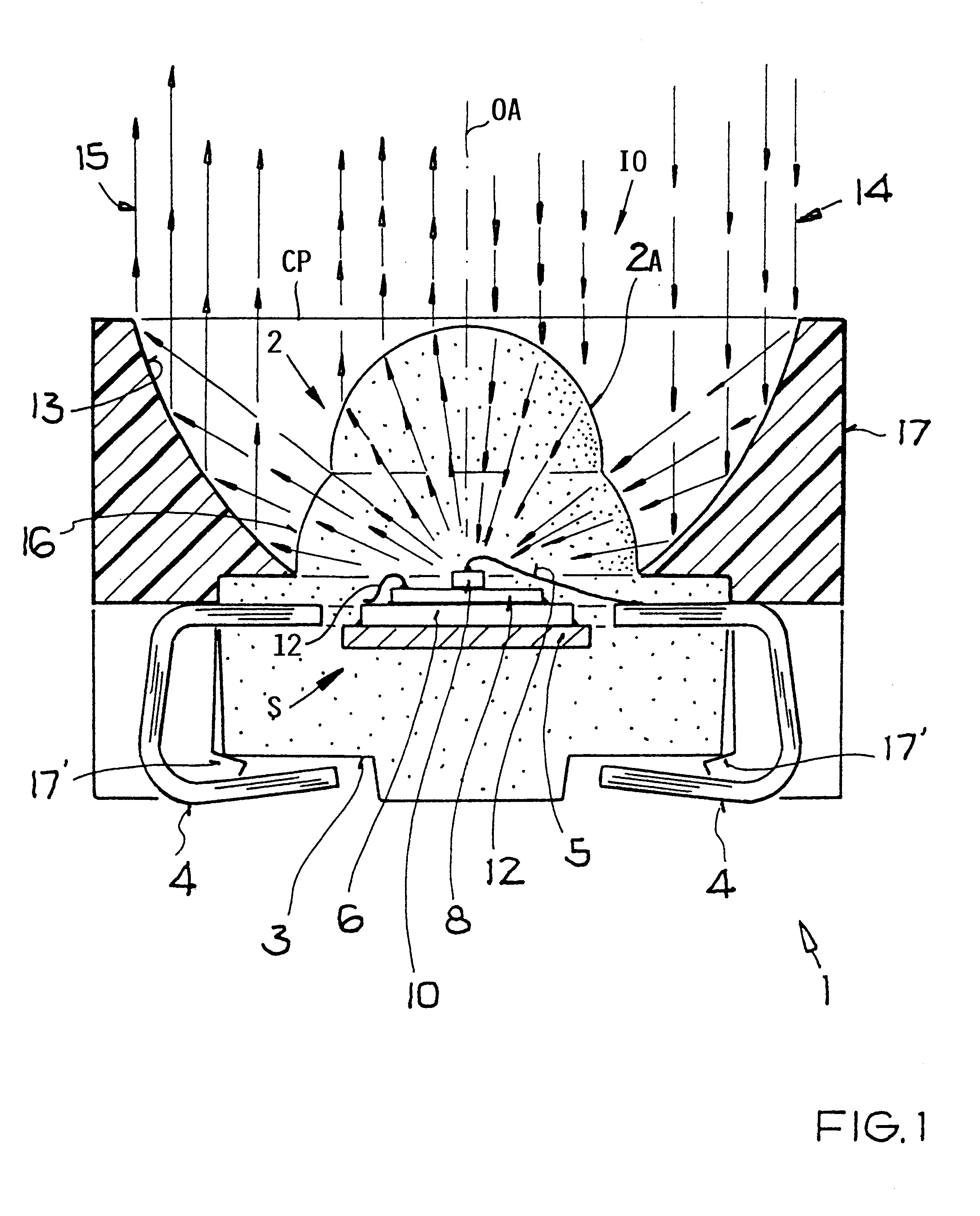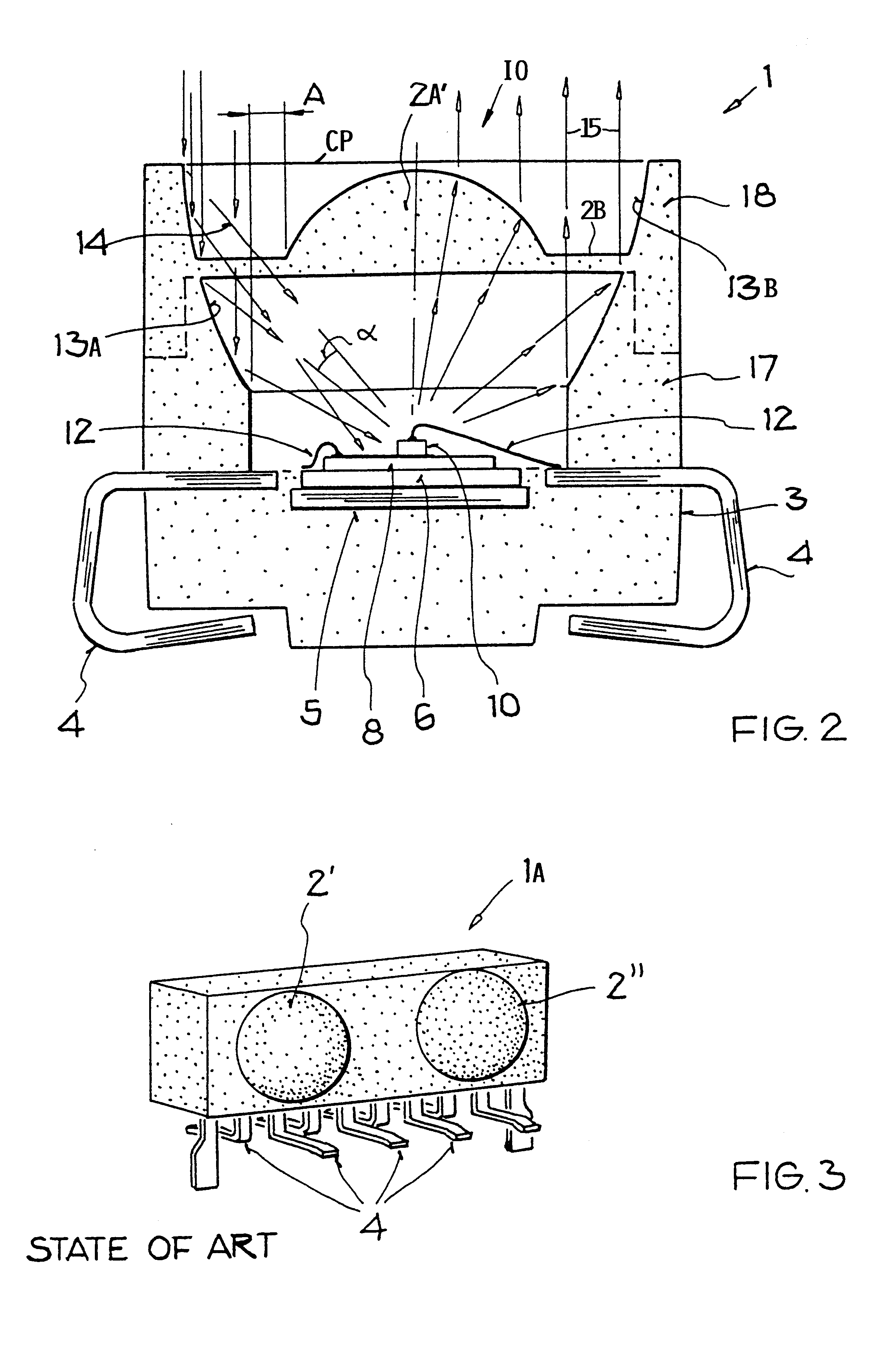Component for optical data transmission
a technology of optical data transmission and components, applied in the direction of transmission, transmission monitoring/testing/fault-measurement systems, transmission, etc., can solve the problems of reducing the sensitivity of the receiver, high material costs, and large dimensions of the transceiver, and achieve high transmission power and high receiver sensitivity
- Summary
- Abstract
- Description
- Claims
- Application Information
AI Technical Summary
Benefits of technology
Problems solved by technology
Method used
Image
Examples
Embodiment Construction
FIGS. 1 and 2 show an infrared transceiver 1 including a lens 2 as an optical system, a housing 3 made of, for example, a thermoplastic or thermosetting material and transparent for IR beams. Terminal pins 4 lead to the outside as part of a metallic strip carrier 5. An integrated circuit 6 is mounted on the carrier 5 for amplifying the signals. A photo PIN diode is arranged as a receiver or detector chip 8 on the integrated circuit 6. The photo PIN diode 8 is a special IrDA product, produced by a technology that is standard for photo PIN diodes.
The transmitter or emitter chip 10 is bonded concentrically onto the detector chip 8. Basically, the transmitter or emitter chip 10 is a known infrared transmission diode. The surface area of the integrated circuit 6 is larger than the surface area of the detector chip 8. The surface area of the detector chip 8 is larger than the surface area of the emitter chip 10. A signal transmission between the emitter chip 10 and the integrated circuit ...
PUM
 Login to View More
Login to View More Abstract
Description
Claims
Application Information
 Login to View More
Login to View More - R&D
- Intellectual Property
- Life Sciences
- Materials
- Tech Scout
- Unparalleled Data Quality
- Higher Quality Content
- 60% Fewer Hallucinations
Browse by: Latest US Patents, China's latest patents, Technical Efficacy Thesaurus, Application Domain, Technology Topic, Popular Technical Reports.
© 2025 PatSnap. All rights reserved.Legal|Privacy policy|Modern Slavery Act Transparency Statement|Sitemap|About US| Contact US: help@patsnap.com



